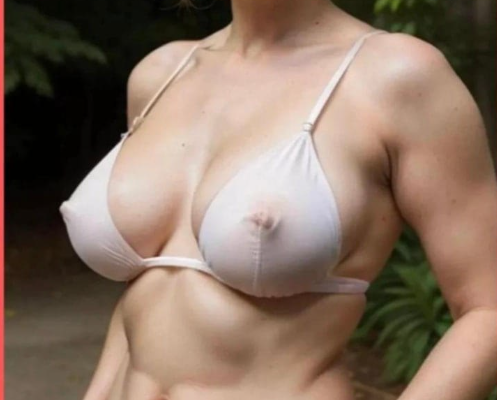
In an era when the definition of masculinity is evolving rapidly, few figures embody this shift as powerfully as Ronald Baird. In the world of fashion—a space that has long blurred the lines between gender, identity, and aesthetics—Baird stands out not merely as a model, but as a cultural statement. His rise represents more than the success of one individual; it signals a broader transformation in how society sees, defines, and celebrates modern masculinity.
A New Face in a Changing Industry
For decades, the fashion world has been shaped by rigid ideals of male beauty—square jaws, stoic gazes, broad shoulders, and silent strength. But in recent years, the industry has witnessed a wave of change. Baird’s ascent perfectly aligns with this moment. His face—sharp yet approachable, structured yet expressive—has become a canvas upon which designers can tell new stories.
Runway after runway, Baird has proven that masculine beauty doesn’t have to be confined to traditional archetypes. He’s walked for some of the world’s most prestigious fashion houses, turning heads not just because of his striking looks, but because of how naturally he balances power with vulnerability. That balance is what makes him magnetic.
What sets him apart is his ability to shift effortlessly between hyper-masculine aesthetics and softer, more fluid expressions. In one campaign, he might exude the strength and classic elegance of a tailored suit; in another, he might embrace sheer fabrics, pearl accessories, or pastel tones—defying conventional expectations of male presentation.
Defining Modern Masculinity
Masculinity, for many generations, was defined by restraint. Men were expected to appear strong but emotionless, commanding but controlled. In fashion, this translated into a specific look: stoic faces, minimal embellishment, and carefully contained energy. Baird, however, is part of a new generation that challenges these codes.
When he steps onto a runway, he carries with him an unspoken message: masculinity is not about how little emotion one shows, but about the confidence to express it fully. His presence reclaims softness as a strength rather than a weakness. Whether dressed in structured leather jackets or silk blouses, he does not diminish his masculinity—he expands it.
This ability to embody duality reflects a broader cultural movement. Around the world, men are increasingly redefining what it means to be masculine. The rise of androgynous fashion, gender-fluid aesthetics, and inclusive beauty standards has opened the door for figures like Baird to thrive.
A Canvas for Designers’ Boldest Visions
Designers have always sought models who can tell stories without words. Baird has become a favorite precisely because of this gift. He doesn’t simply wear clothes; he animates them. On the runway, he’s a chameleon. In one moment, he can channel the sharp dominance of classic menswear; in the next, he can evoke a romantic, almost poetic softness that elevates the garments he wears.
In an era when luxury brands aim to merge tradition with innovation, Baird’s look bridges those worlds. His angular features and sculpted physique lend themselves to classic tailoring, but his willingness to experiment with avant-garde styling allows designers to push boundaries without losing their audience. This makes him an essential figure in the current evolution of fashion.
Beyond the Runway: A Cultural Icon in the Making
What makes Baird’s influence so profound is not limited to the catwalk. Offstage, he has cultivated a persona that resonates deeply with younger audiences who crave authenticity. Through interviews and public appearances, he speaks openly about individuality, self-expression, and the importance of breaking free from limiting labels.
In an age where fashion and identity are more intertwined than ever, Baird has become a symbol of freedom. Young men who once felt confined by traditional expectations look to figures like him and see permission to explore, to question, to redefine themselves. He represents a masculinity that is not afraid to be beautiful, emotional, or unconventional.
Fashion as a Mirror of Social Change
Fashion has always been a mirror—reflecting society’s values, struggles, and transformations. The emergence of Baird as a leading face in the industry signals a shift toward more inclusive and nuanced portrayals of gender. His success reflects a demand for representation that goes beyond the binary, recognizing that masculinity can be elegant, tender, expressive, and strong all at once.
In many ways, his presence challenges old gatekeepers. For years, campaigns and runways centered on a narrow idea of what men should look like. Today, Baird stands as proof that beauty—and power—come in many forms. His growing influence pushes brands to adapt, inspiring creative directors to build collections that reflect the diversity of modern male identity.
The Power of Vulnerability
One of Baird’s most defining qualities is his embrace of vulnerability. In photoshoots, he doesn’t hide behind hard stares or distant poses. He lets the camera see him—really see him. This willingness to appear raw, to let emotion come through, is a quiet rebellion against a century of hyper-controlled male imagery.
The result is a new language of fashion photography. His face tells stories that can’t be confined to traditional gender roles: stories of strength that coexist with softness, resilience that embraces emotion. For young men watching, this is a powerful message. It tells them that being masculine doesn’t mean being impenetrable; it means being real.
The Future of Masculinity in Fashion
If the last decade has been about breaking walls, the next may be about building bridges. Figures like Baird are at the forefront of this movement—models who embody not just a look, but a cultural moment. His career trajectory suggests that the future of men’s fashion will be increasingly fluid, expressive, and open to interpretation.
This shift isn’t just happening in high fashion. Streetwear, luxury brands, and everyday men’s clothing are evolving too. The idea of what men “should” wear is being replaced with what they want to wear. And as this transformation continues, Baird’s image—a face both bold and soft—will remain a defining symbol of the era.
Legacy in the Making
Though still early in his career, Ronald Baird’s impact is already clear. He is more than a model; he is a mirror for a generation that no longer accepts narrow definitions of identity. His rise speaks to a world ready to embrace complexity, beauty, and truth in all their forms.
In the end, the striking face of modern masculinity isn’t about a single look. It’s about freedom—the freedom to be expressive, to be strong and soft, to be unapologetically oneself. And in that sense, Ronald Baird isn’t just modeling clothes; he’s modeling a new kind of manhood.
His story is still being written, but one thing is certain: the fashion world will never look at masculinity the same way again.

